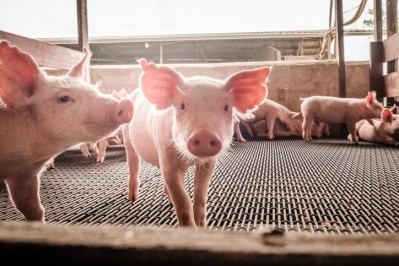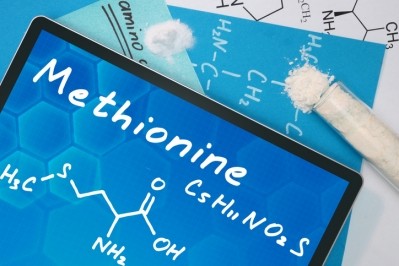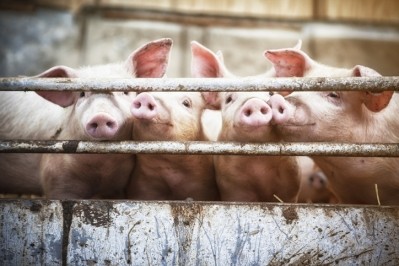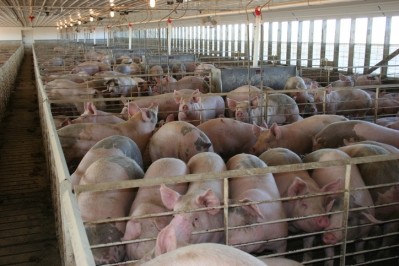Antioxidants and omega-3 fatty acids show promise for boosting piglet birth weight
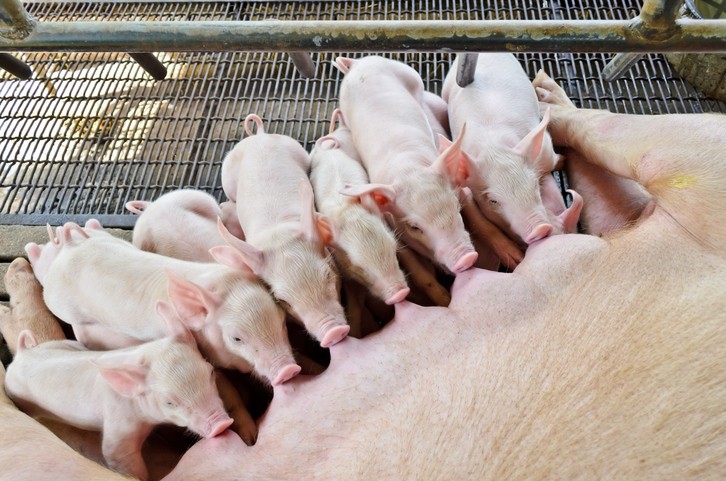
“We need to confirm these findings using more sows in the next stage of the project but the indications are that we can increase the birthweight of the smallest piglets in the litter,” Anja Varmløse Strathe, assistant professor, University of Copenhagen, Denmark, told FeedNavigator.
The increased litter size in today’s hyper-prolific sows is resulting in the birth of small and/or underdeveloped piglets, which have a higher mortality and slower growth rate.
Anja Varmløse Strathe has been leading a project, Feed4Life (a collaboration between University of Copenhagen, SEGES and DLG), where the focus is on gaining knowledge on fetal development in hyper-prolific sows and investigating whether different feeding interventions in early to mid-gestation can affect fetal development and increase the birth weight of piglets.
She reported on earlier insights gleaned from the project at our event, YAN 2020, in Amsterdam last year, but we can now hear about the team’s findings as regards the impact of particular feed additives in gestational diets and how they affect fetal development and the birth characteristics of piglets.
The researchers evaluated a raft of feed additives across four experiments:
“In the first experiment, we added omega-3 fatty acids, mainly DHA, from a commercial algae product – DHA Gold - that is rich in DHA. In the second experiment, we added B-vitamins because one of the theories is that high homocysteine levels cause the variation within the litter and in birth weight, so we were hoping to see if the supplementation of B-vitamins could change that. Then, in the third experiment, we added some antioxidants in the form of vitamin C and organic zinc and organic selenium. In the fourth experiment, we added methionine,” Varmløse Strathe explained.
Study set-up
In terms of the cohort, she said there were 120 sows in each experimental diet group and 120 sows in each control group for the four trials.
The sows were blood sampled and the team took back fat measurements before and throughout the entire gestation period and, also, during the previous lactation period, she said.
“The sows were fed the experimental diets from the day after mating until around day 45 or 50 during gestation and then all sows went back on control diets for the rest of gestation.”
The slaughtering process was constrained due to COVID-19 restrictions in Denmark – closure of slaughterhouses – but the team did manage to slaughter some sows and thus assess fetal development from the experimental diets, she said.
“And we individually weighed piglets in as many litters as we could, to give us the average piglet birth weight but also variation within the litter,” said the research lead.
Omega-3 fatty acids findings
“In terms of the DHA supplementation findings, we did not see anything on fetal development or placenta weight – it was the same in both groups. We only managed to slaughter four sows in the control group and 10 sows in the experimental group [so for comparative purposes not ideal].
“When we looked at the farrowing results, we saw that total born, live born and still born were the same in both groups so we did not affect that – and that was the result in all the experiments.
“But when we looked at the piglets below 800 grams, we noted there were a tendency for fewer piglets under 800 grams in the DHA group.
“We then looked further into the smaller piglets – what we found when assessing the 15% lightest ones in the litters was that we had an increase in the birth weight of between 20 and 60g of those piglets in the DHA group compared to the control group. It is only a numerical difference, but it is, actually, quite a large increase in weight when it comes to the smaller piglets.
“So we can say that we have some indications from the DHA trial that we can increase the birth weight of the smallest piglets by inclusion of omega-3 fatty acids in the sow diet.”
The team is set to undertake an additional trial on omega-3 fatty acids supplementation to see if such an intervention makes a difference if fed to the sow throughout the whole cycle, she said.
Vitamin B trial
The researchers supplemented the sows’ diets in the experimental groups with extra folic acid, vitamin B12 and vitamin B2. “These are known to be part of the metabolism whereby homocysteine is converted to methionine. Unfortunately, we don’t have the blood sample results for that yet to see if we actually had high levels of homocysteine at the outset or whether we were able to influence the levels.”
The team was not able to slaughter any of the sows in this trial.
“But we did have the farrowing results. They showed there was no impact on total born, live born or still births – that was the same in both the control and experimental groups. The only outcome we saw was that the control group had a higher average piglet birth weight than the vitamin B group. That was unexpected – we will have to wait to get the blood sample results to figure out why.”
Antioxidant trial
Another theory is that it is oxidative stress that causes variation in birth weight within the litter, said Varmløse Strathe, explaining the rationale for supplementing the gestation diets with vitamin C and organic zinc and selenium. “The control diet contained the same amount of total zinc and selenium as the experimental diet but only as inorganic sources, whereas part of the inorganic zinc and selenium was substituted with organic sources in the experimental diet.”
The team managed to slaughter 10 sows per groups as planned in this trial, she said.
“We did not see anything startling in relation to the number of fetuses and embryo survival – fetal weight in both groups was quite similar. But we did see that there was quite big numerical differences in terms of the weight and area of the placenta – it was much larger in the antioxidant group compared to the control group, which is quite interesting.
“If placentas are more even in size, this could allow a more even nutrient flow to piglets. These findings indicate antioxidant supplementation may have impact on placenta development.”
The blood samples show that the sows are responding to vitamin C, the team is still awaiting analysis of two other markers for oxidative stress, she said.
“If we look at the farrowing results, there was no impact on total born, live born or still born piglets. But the average birthweight was numerically a little bit higher in the experimental group and that cohort also had less variation within the litter.
“Then, when we looked further into the smaller piglets, we also saw that we had numerically fewer piglets below 800g in the antioxidant group compared to the control group. We could see that the 25% lightest piglets in the litter increased their birth weight by between 20 to 75g compared to the control diet.
“For this trial, as per the DHA trial, we have an indication that antioxidants might increase the size of the birth weight of the smallest piglets. There is also a more uniform litter. The mechanism might be the larger placenta.”
Methionine
The experimental trial exploring the impact of methionine is not yet completed. “We don’t have any results there yet.”
She said the basis of that experiment was a recent Chinese study on methionine, examining its effect on placental vascularization both in vitro and in sows.
